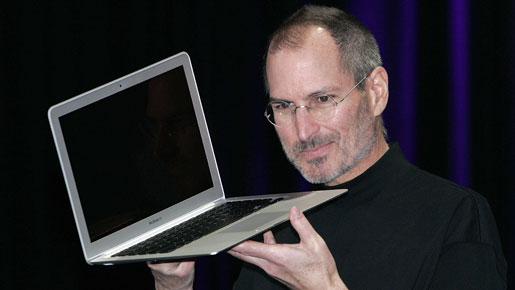
A crop of sleek, design-led laptops, featuring light emitting diode (LED)-backlit displays was on show at the Computex trade fair in Taiwan recently, using technology once the preserve of smaller gadgets such as toys, music players and mobile phones.
Just three-quarters of an inch thick, and able to fit into a standard manilla envelope, Apple Inc’s recently launched Macbook Air, with LED display, makes the laptop lighter than one lit by conventional cold cathode fluorescent lamps (CCFLs) and consumes less power.
“The selling point this year is very clear, and that is ultralight and bright,” Neo Lin, a product manager of Taiwan’s Micro-Star International Co, said at Computex, the world’s second-largest PC fair.
“And don’t forget: green is the way to make money now.”
At its booth, MSI showed off its ‘Wind’ notebook, weighing in at around one kilo, and which has a 10-inch LED-backlit display and a sleek outer shell to attract design-conscious customers.
Dell Inc, Sony Corp, Acer Inc and Lenovo also see the future for LED and are coming up with ever-slimmer laptops featuring LED-backlit displays.
Computer makers, increasingly concerned with appealing to consumer demands for more environmentally friendly products, point to these displays’ benefits. They typically use 20 percent less power, which extends the battery life, and they contain no mercury, which poses a threat to the environment.
Market researcher Display Search expects LED-backlit displays to account for 50 percent of all notebook panels in 2010, up from 12 percent this year. By 2015, all laptop displays will use LEDs, generating sales of £3bn.
LCD Makers
Liquid crystal display makers AU Optronics Corp, Chi Mei Optoelectronics Corp, and LED chip supplier Epistar will benefit from the shift to LED.
Macquarie Research names Epistar as its top pick in the LED sector, although in the longer term, Merrill Lynch warns of growing competition from newcomers, including display and PC makers.
Merrill Lynch expects Epistar’s EPS to rise 24 percent in 2008 and grow another 46 percent in 2009. But the EPS growth will slow to 12 percent in 2010.
As part of its efforts to make environmentally friendly products, about one-tenth of AU’s laptop LCD panels use LED backlights now and the world’s No.3 LCD maker aims to make all its laptops with LED displays by 2011.
Taiwan Semiconductor Manufacturing Co Ltd, the world’s biggest contract chip maker, is considering the potentially lucrative LED market.
However, making things smaller typically costs more in the computing industry.
LED backlights are more expensive than CCFL-backlit displays, with a premium of $25, but researcher iSuppli says the price gap could narrow to within $10 in the next few years.
“Price is the biggest concern now, but I don’t have doubts that the penetration rate will be higher,” said Alex Huang, a vice president at Taiwan’s Mega International Securities.
Further ahead, large desktop monitors and flat-screen LCD TVs might be lit by LEDs.
LED-lit displays are set to make up nine percent of the LCD TV market and 12 percent of the LCD monitor market, Display Search said.
“It’s a matter of time and premium. If consumers want them, they will be willing to pay more,” said Maggie Chen, a brand manager at Acer, whose latest Ferrari laptop coated in carbon-fibre black has an LED-backlit display.

